
Worthing is a seaside resort town in West Sussex, England, at the foot of the South Downs, 11 miles (18 km) west of Brighton, and 18 miles (29 km) east of Chichester. With a population of 113,094 and an area of 12.5 square miles (32.4 km2), the borough is the second largest component of the Brighton and Hove built-up area, the 15th most populous urban area in the United Kingdom. Since 2010, northern parts of the borough, including the Worthing Downland Estate, have formed part of the South Downs National Park. In 2019, the Art Deco Worthing Pier was dubbed the best in Britain.

Goring-by-Sea, commonly referred to simply as Goring, is a neighbourhood of Worthing and former civil parish, now in Worthing district in West Sussex, England. It lies west of West Worthing, about 2.5 miles (4 km) west of Worthing town centre. Historically in Sussex, in the rape of Arundel, Goring has been part of the borough of Worthing since 1929.
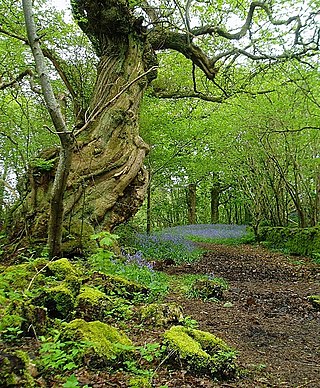
In the United Kingdom, ancient woodland is that which has existed continuously since 1600 in England, Wales and Northern Ireland. Planting of woodland was uncommon before those dates, so a wood present in 1600 is likely to have developed naturally.

Worthing West is a constituency represented in the House of Commons of the UK Parliament since its 1997 creation by Sir Peter Bottomley, a Conservative, who is the Father of the House of Commons.
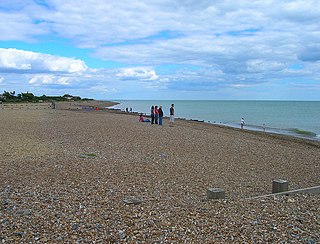
Ferring is a coastal village, civil parish and electoral ward in the Arun District of West Sussex, England. It is part of the built-up area of Worthing and is accessed along the A259 road 3 miles (4.8 km) west of the town - comprising North Down Farm and Highdown Hill to the north and the town itself to the south, with approximately equal size green buffers to the town in size, to east to Goring-by-Sea and west to East Preston.

Castle Goring is a Grade I listed country house in Worthing, in West Sussex, England about 4.5 miles northwest of the town centre.

Durrington is a neighbourhood of Worthing and former civil parish, now in the borough of Worthing in West Sussex, England. Historically in Sussex, in the rape of Bramber, it is situated near the A27 road, 2.3 miles (3.7 km) northwest of the town centre. Since 1992 it has been home to the community-led Durrington Festival.

Worthing is a large seaside town in Sussex, England in the United Kingdom. The history of the area begins in Prehistoric times and the present importance of the town dates from the 19th century.
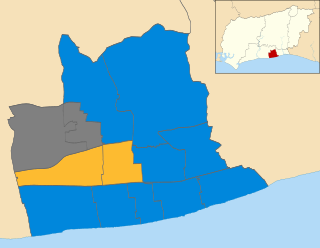
The 2007 Worthing Borough Council election took place on 3 May 2007 to elect members of Worthing Borough Council in West Sussex, England. One third of the council was up for election and the Conservative Party stayed in overall control of the council.

The 2008 Worthing Borough Council election took place on 1 May 2008 to elect members of Worthing Borough Council in West Sussex, England. One third of the council was up for election and the Conservative Party stayed in overall control of the council. Overall turnout was 35%.
Worthing, a seaside town with borough status in the United Kingdom, is connected to the rest of the country by a network of major roads, a mainline railway, frequent bus and coach services and a nearby airport. Its 19th-century growth was encouraged by the development of turnpikes and stagecoach routes to London and nearby towns. By the middle of that century railway services improved journey times and conditions significantly. Suburbanisation in the 20th century was assisted by a network of bus routes.
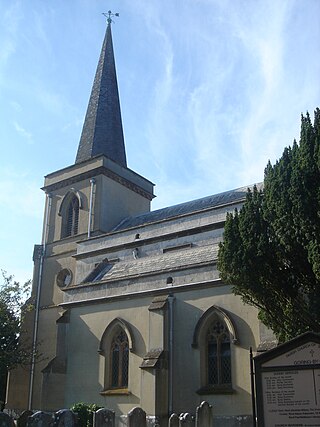
St Mary's Church is an Anglican church in the Goring-by-Sea area of the Borough of Worthing, one of seven local government districts in the English county of West Sussex. The late Norman parish church of the ancient village of Goring retains some architectural elements from that period, but Decimus Burton's comprehensive restoration of 1837 has given the church its present Gothic Revival exterior appearance. German artist Hans Feibusch, who worked extensively in the Diocese of Chichester, provided a mural in 1954: it is considered impressive, but caused controversy at the time. English Heritage has listed the church at Grade II* for its architectural and historical importance.

St Symphorian's Church is an Anglican church in the Durrington area of the borough of Worthing, one of seven local government districts in the English county of West Sussex. The original 13th-century chapelry declined and fell into ruins in the 17th century, partly due to damage caused by the English Civil War. Anglican worship was re-established in a tin tabernacle in 1890 as the former village grew into a suburb of Worthing, and during World War I a permanent church was built. It was extended during World War II. English Heritage has listed the building at Grade II for its architectural and historical importance.
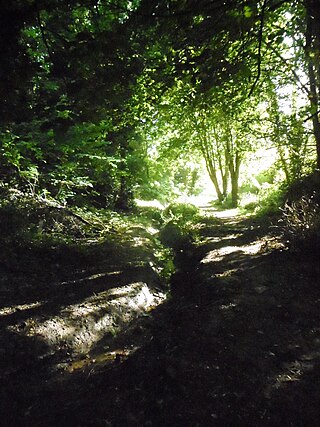
Speckled Wood is a 12.7-acre (5.1 ha) woodland and park in Ore Village in the Ore Valley, Hastings, East Sussex, United Kingdom. The woodland park consists of woodland trails and clearings. The woodland has steep sixty-degree sides and is a wet woodland.

Forge Wood is the 14th residential neighbourhood in Crawley, a town and borough in West Sussex. The 1,900 houses and other facilities will be built on open land in the northeast of the borough, adjoining the ancient village of Tinsley Green and to the north of the Pound Hill neighbourhood.
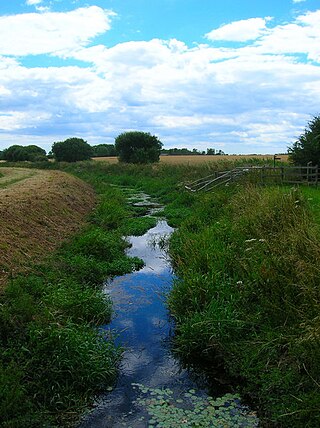
The Ferring Rife is a stream in West Sussex, England that rises in the West Durrington area of Worthing. It has multiple sources including one near Castle Goring and another in Titnore Wood. The streams converge that make up the Ferring Rife converge north of Littlehampton Road, passing through Maybridge, then west of Ferring into the sea. It flows south-west, west and then south into the English Channel, between the villages of Ferring and East Preston.

The following is a timeline of the history of the borough of Worthing, West Sussex, England.

















